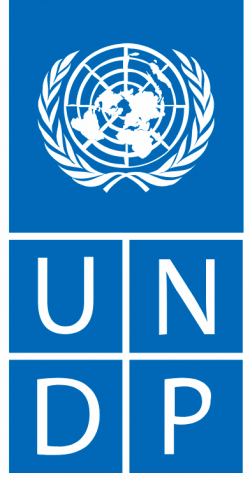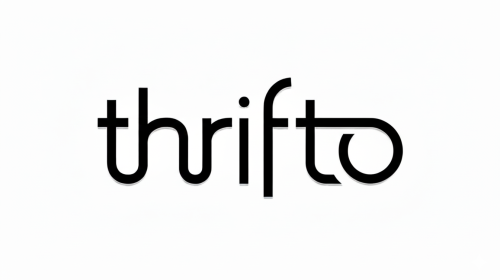UNDP launches Insurance & Risk Finance Facility, ILS support anticipated

By STEVE EVANS — The United Nations Development Programme (UNDP) has launched the Insurance and Risk Finance Facility (IRFF), a new initiative that aims to build financial resilience and bridge a $1.4 trillion global health, mortality, and disaster protection gap, with support from the insurance-linked securities (ILS) market expected in future.
Importantly, this Insurance and Risk Finance Facility (IRFF) will work to channel risk to private insurance, reinsurance and capital markets over-time, and aims to significantly increase the role of insurance and risk-financing in development.
The German Government has contributed €35 million in funding to the Facility, which will be used for technical work and capacity building on the ground, as well as for the development of new insurance products.
It’s also seen as another way to advance delivery of the InsuResilience Global Partnership’s Vision 2025 promises, which were originally presented at the UN Climate Action Summit 2019.
Capacity has already been lined up through partnerships with the Insurance Development Forum (IDF) and backers include ten of the largest insurance and reinsurance companies in the world (Allianz, AXA, Axis, Guy Carpenter, Hannover Re, Munich Re, SCOR, Swiss Re, Willis Towers Watson and Aon), who will work with UNDP to build long-term financial resilience in countries.
“The insurance industry recognizes that the new challenges we collectively face – the climate crisis being the largest of them all – require public-private solutions. We welcome the investment UNDP is making through the launch of its Insurance and Risk Financing Facility to work together with the insurance industry at this crucial juncture. This demonstrates the progress the insurance and development community are making and will allow us to ramp up results on the ground,” explained Denis Duverne, Chairman of Axa and Chairman of the Insurance Development Forum
“In a world of growing and converging risks, developing countries and their communities are often the worst affected and the least able to rebuild and recover. Without financial resilience, the most vulnerable can be locked into a downward spiral of debt and poverty. Faced with these challenges, insurance and risk-finance products, tools and services can secure our critical infrastructure, protect our agriculture and businesses, and preserve critical ecoystems that make life on earth possible,” added Achim Steiner, UNDP Administrator.
The IRFF will operate across five regions globally, working alongside insurance and reinsurance industry participants as well as government in order to transform markets.
The ambition of the IRFF is to co-create insurance and risk finance solutions in more than 50 developing countries by 2025, embing them in public financial decision-making.
All with a goal of contributing to the InsuResilience Vision 2025 target of protecting 500 million poor and vulnerable people by 2025.
“Building the financial resilience of countries and communities is a critical element of tackling climate change and safeguarding past and future development gains. Germany is strongly committed to the InsuResilience Global Partnership to enhance protection from climate impacts. Risk finance and insurance solutions enable the delivery of effective disaster response and help countries to be better prepared for the impacts of climate change and other shocks by reducing humanitarian impacts, building people’s capacity to recover more quickly and strengthening community resilience. In 2020 alone, more than 200 projects in over 100 countries contributed to the InsuResilience Global Partnership, protecting an additional 137 million people,” explained Dr. Maria Flachsbarth, Parliamentary State Secretary, German Federal Ministry for Economic Cooperation and Development (BMZ).
“The global community made a commitment at the UN Climate Summit in 2019, and all of us – governments, industry, the development sector – need to step up our work to enable climate-proof development.”
There is a direct climate link as well, in the work the IRFF will undertake, as under it, the UNDP will work with governments to include climate risk modelling work in their National Development Plans and Financing Strategies, Nationally Determined Contributions, National Adaptation plans and more.
All of which should heighten awareness of climate related exposures at the national level, driving a need for risk transfer and risk capital.
To learn more, Artemis spoke with Daniel Stander, a Senior Advisor to UNDP and a former Global Managing Director of RMS.
Stander advises in particular on Partnerships and has been working closely with the UNDP and Partners on the IRFF launch.
“Only through partnerships can we hope to leverage the enormous potential of insurance solutions to stabilise development progress, protect the vulnerable and build resilience in an increasingly risky world,” Stander explained.
He went on to explain the importance of the IRFF launch, “The need for and the potential of ex-ante risk finance is well documented. However, progress to date has been stymied by two issues. The first is the absence of a credible, in-country partner with the relationships and contextual understanding needed to ensure governments are adequately supported in their efforts to embrace appropriate risk pooling solutions. The second is the absence of frameworks that allow markets to flourish. The IRFF, predicated on deep collaboration with the insurance value chain, has been designed to overcome precisely these two obstacles. Never has a partnership of such scale been put in place between any industry and the development sector.”
The IRFF is a firmly private market focused initiative, with the UNDP having no interest in bearing risk itself, rather in facilitating the use of insurance and risk transfer more widely to increase resilience.
“Unlike some in the development space, UNDP has little interest in capitalizing, underwriting or syndicating risk. UNDP firmly believes that the private sector is far better placed to fulfil these functions, and sees itself as a catalyst to improve the enabling environment, and to thereby drive forward new risk financing solutions with its insurance industry partners. As such, the IRFF has been welcomed as a breath of fresh air by the entire insurance value chain. It’s a harmonious marriage, without the competitive tensions that have undermined previous attempts to help diversifying risk to find much needed capital.
“Over time, this initiative will protect the vulnerable by leveraging the balance sheets of insurers, reinsurers and ILS funds. Much credit goes to UNDP and BMZ for the vision and ambition, but just as much goes to the private sector for putting aside competitive priorities and rolling up its parametric sleeves in order to grow the size of the insurable pie for everyone’s benefit,” Stander said.
Going on to explain the role of insurance-linked securities (ILS), “The facility is agnostic to the source of any risk capital deployed. Much more important are factors like protecting the vulnerable, effective triggers, coupling risk transfer with contingency planning, and empowering people in the face of risk. That said, discussions with industry partners and programme countries have foregrounded parametric solutions – not just for the obvious reasons of speed and certainty, but also because transparent structures tend to increase the pool of potential capital providers.
“Given the scale of the IRFF’s ambition, there’s every reason to expect issuances that will be as attractive to dedicated ILS funds as they will be to insurance and reinsurance firms.”
The scope of work will begin with a focus on larger, middle-income developing countries, but all regions are in scope, “because the issues of risk, financing and development are critically intertwined everywhere,” Stander told us.
“The IRFF’s initial focus is not limited to one or two regions. Rather, the facility is already up and running in each of the five regions where UNDP operates. Work is well underway, for example, in Algeria, Argentina, Bangladesh Colombia, Ghana, Jordan, Nigeria, Pakistan, Panama, Uzbekistan, and Vietnam,” he continued.
For now, the focus is on the initial insurance and reinsurance market partners, but with an ambition to expand that as premiums build and more access to risk capital is needed.
Stander said that, “Capital providers include several reinsurers (e.g. Hannover Re, Munich Re, Ren Re, SCOR, Swiss Re) and a number of primary insurers (e.g. Allianz, AXA, Axis). The IRFF is also involving regional and local insurers (e.g. ARC), as one of our aims is to help strengthen the domestic insurance markets in every country where we work. The same is true of the brokers, insofar as we are working both globally with the larger intermediaries (e.g. Aon, Guy Carpenter and Willis) and locally involving domestic brokers as appropriate.”
Concluding, “One of our core principles in the UN is leaving no one behind. It’s built into the Sustainable Development Goals, and we really want to work with industry to open up conversations on insurance and risk-financing in all countries that could benefit, regardless of income-level or institutional capacity. We need to always be widening the scope of our work, and bringing in more countries – and private sector partners – into the conversation.”
The IRFF is just the latest in a string of initiatives that promised to advance the roll-out of insurance and reinsurance products to developing nations, in a mission to enhance resilience and ensure more people are covered.
Too often these have ended up having little real impact, while industry players have been unable to agree on motives and modes of operation.
The IRFF has a broad mandate to deliver more risk transfer, using private market capital and public funding to assist in the technical work and preparing countries to embrace insurance markets more fully.
It is to be hoped that this time a more significant dent on global underinsurance can be made, as there are only so many initiatives that can be introduced to governments around the world without them becoming jaded and losing trust.
The IRFF seems to want to take the right approach and to use the most efficient forms of risk transfer and risk capital available, but time will tell whether it can deliver on its promises and make a meaningful impact and really begin to narrow some of the protection gaps that exist and continue to widen.
The ILS market will be keen to support any initiative like this, if the opportunity is presented in the right way.
Given equal opportunity to write the risks the Facility can produce, or that it can stimulate to come to market, ILS funds will be as keen as they would to participate in any other part of the market, as long as risk is well-priced.
Should the IRFF look to structure risk into capital market vehicles, or securitisations, then it may be able to benefit from the efficiency of the capital markets more directly, to the ultimate benefit of those it is trying to cover.







Leave a Reply